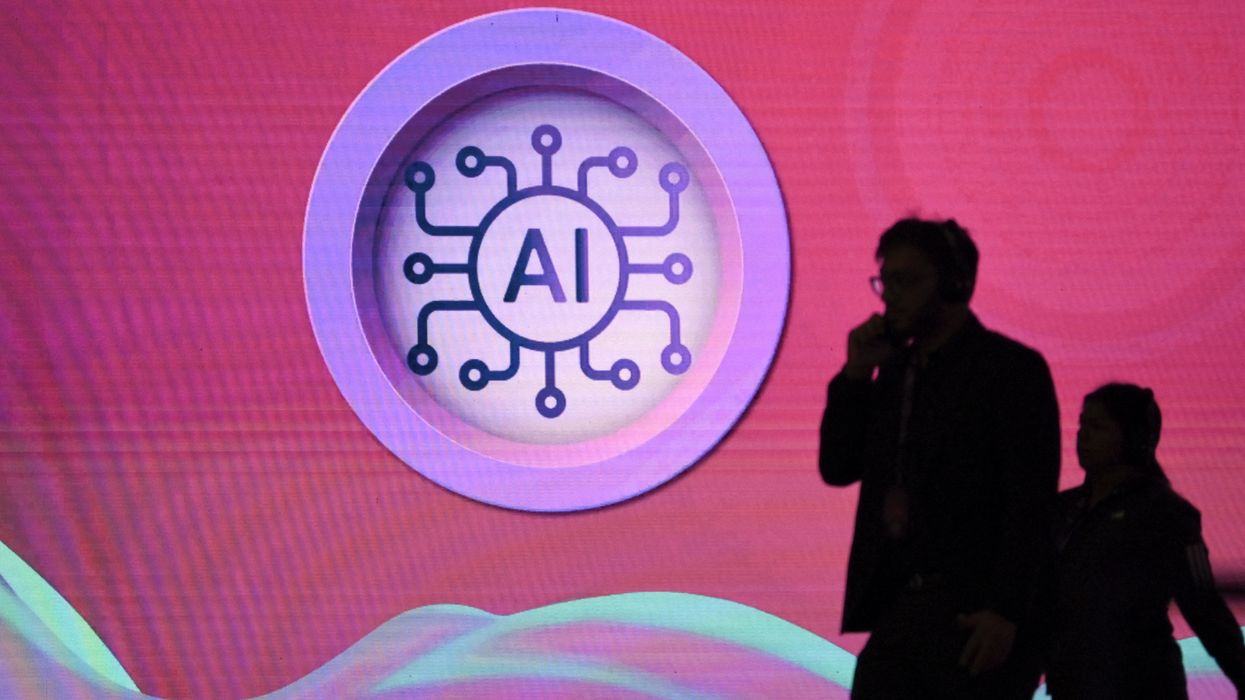Laughing, Trump turned to tech bosses gathered for the event and—singling out Jensen Huang, CEO of chip-maker Nvidia—said: "And I'm looking at you guys. You're taking over the world, Jensen. I don't know what you're doing here. I hope you're right."
Along with Huang—who heads the world's largest publicly traded company—the CEOs of Apple, and ChatGPT creator OpenAI joined Trump on his UK trip.
Starmer said the deal involves more than $200 billion in total US investments and will create 15,000 jobs over the next decade. The prime minister named US companies including Amazon, Blackstone, Boeing, Citigroup, and Microsoft, and UK firms like AstraZeneca, BP, GSK, and Rolls Royce as being part of the deal.
Other companies involved in the agreement include Google and its AI laboratory DeepMind, OpenAI, Oracle, Salesforce, and ScaleAI in the United States and AI Pathfinder, DataVita, NScale, and Sage in Britain.
DeSmog UK deputy director Sam Bright reported Thursday that the investment bank led by Warren Stephens, Trump's ambassador to London, owns hundreds of millions of dollars in shares of tech companies involved in the AI deal, including Google parent company Alphabet, Microsoft, and Nvidia.
Like Amazon, Google, Meta, and Nvidia, Stephens—who is a billionaire—made a seven-figure donation to Trump's inauguration fund.
Prominent critics of the agreement include former UK Deputy Prime Minister Nick Clegg, who is also Meta's former president of global affairs. Speaking Wednesday at a Royal Television Society conference in Cambridge, Clegg said the deal leaves Britain with "sloppy seconds from Silicon Valley" and "is just another version of the United Kingdom holding on to Uncle Sam’s coattails."
Opposition to the tech deal was also widespread Wednesday at a central London protest against Trump's visit organized by the Stop Trump Coalition.
Nick Dearden, director of the campaign group Global Justice Now and a spokesperson for the Stop Trump Coalition, noted in an interview with Wired senior business editor Natasha Bernal that the details of the pact have not been made public.
"We have not seen the text of the deal. We don’t know what we have given away," Dearden said. "We know that some of the tech barons accompanying Trump want us to drop parts of our regulation, want us to drop the digital services tax, want us to make it easier for them to acquire and merge with each other to become even bigger monopolies, so we are worried about that.”
Gobal Justice Now trade campaigner Seema Syeda said in a statement:
This toxic technology pact that favors the interests of US tech bros and rich corporations over ordinary people must be opposed at all costs. It’s a democratic scandal that the public and Parliament have been left in the dark as to its contents to date, but what we do know should ring alarm bells. Instead of bending over backwards to appease Trump in an attempt to avoid his tariff bullying, it’s time for Starmer to show real leadership and stand up to him. We can’t let an egomaniac like Trump hold our rights and democracy hostage.
Clive Teague—who was at the London rally supporting Extinction Rebellion Waverley and Borders in Surrey—told Bernal that he does not oppose AI if it is powered by renewable energy.
"We can’t keep burning fossil fuels to keep feeding into these data centers, because it’ll swamp the requirements for the rest of the world," Teague said.
Global Justice Now also warned that the tech deal could expose National Health Service (NHS) patient data to exploitation, wweaken digital privacy protections, thwart regulation of AI, and limit the government's taxation options.
Also sounding the alarm on the US-UK AI deal are scores of creators and creative groups including Elton John, Paul McCartney, and the Writers' Guild of Great Britain, who decried what they say is the Starmer government's failure to adequately protect copyrighted works from unauthorized use by AI companies.
"Artificial intelligence companies have ingested millions of copyright works without permission or payment, in total disregard for the UK’s legal protections," they said in an open letter. "The first duty of any government is to protect its citizens—not to promote corporate interests, particularly where they are primarily based abroad."


